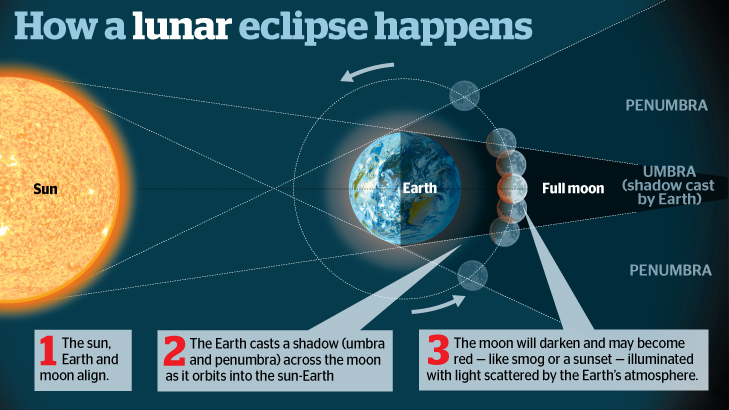
In orbital mechanics, the equations of motion of celestial bodies (stars, planets, moons, etc.) are formulated as point masses located at the centers of mass. In the case of the Moon, the offset between the center of mass and center of figure is ~0.5 kilometers. If the distribution of mass is not uniform, then the center of mass does not coincide with the center of figure. The center of figure of a celestial body (e.g., planet, moon) is the apparent center of the object with respect to its surface and takes into account irregularities in its shape. Central lunar eclipses are always total and they have large umbral eclipse magnitudes, long durations and small values of gamma. The local circumstances at the observer’s position can then be calculated including the eclipse contact times, eclipse magnitude and the duration of totality (or annularity).Ī lunar eclipse in which some part of the Moon's disk passes through the axis of Earth's umbral shadow.

Next, the shadow cone is projected onto Earth’s surface including the effects of Earth’s rotation, the flattening of Earth and the latitude, longitude and elevation of the observer. This plane passes through the center of Earth and is oriented perpendicular to the Moon’s shadow axis. They describe the movement of the Moon’s shadow with respect to the fundamental plane.
LUNAR ECLIPSE DEFINITION SERIES
See: Earth at Perihelion and Aphelion: 2001 to 2100.īesselian elements - The Besselian elements are a series of time dependent variables used to calculate various aspects of a solar eclipse. The point along a planetary orbit that is farthest from the Sun Įarth's mean distance at aphelion is 152,097,701 km Įarth's true distance at aphelion varies from 152,083,140 km to 152,104,533 km because of gravitational perturbations of the Sun, Moon and planets

See: Moon at Perigee and Apogee: 2001 to 2100.

The Moon's true distance at apogee varies from 404,042 to 406,725 km because of gravitational perturbations of the Sun and Earth The Moon's mean distance at apogee is 405,504 km The point along the Moon's orbit that is farthest from Earth


 0 kommentar(er)
0 kommentar(er)
